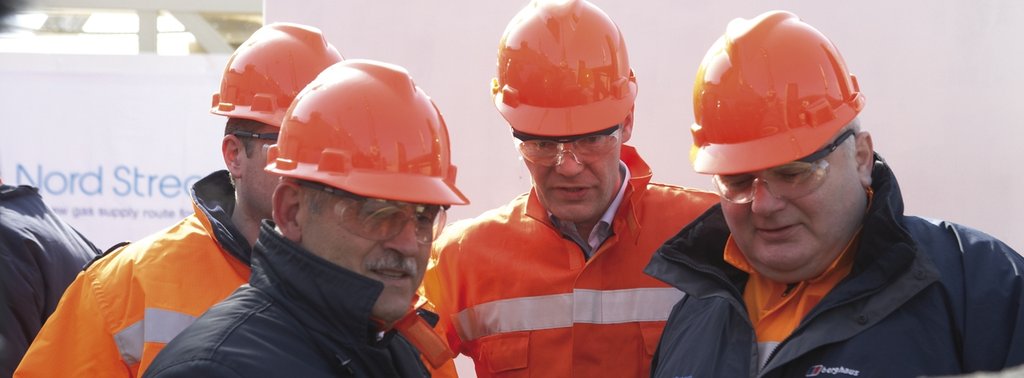Planning the Nord Stream Pipelines
The Nord Stream Pipeline route through the Baltic Sea is the most direct connection between the vast gas reserves in Russia and markets in the European Union. The twin pipeline system occupies less than one-thousandth of one percent of the Baltic Sea floor, and its construction has been planned in such a way as to create only local, and minimal temporary disturbance of the sea floor environment.
To minimise the potential of any long-term detrimental effects to the seabed, Nord Stream commissioned reputable independent experts in the fields of marine and hydrographic surveying to perform surveys and investigations to ensure the pipeline will be secure and safe to operate and will remain stable on the seabed throughout its lifetime. Feasibility research to transit the Baltic Sea began in 1997. Since then, more than 2,500 square kilometres along the route have been precisely surveyed. The initial survey covered a wide seabed corridor so that a defined pipeline route could be engineered. Subsequently more detailed and specific surveys were performed over a narrower corridor width. After the initial survey, more detailed sweeps took place, covering narrow portions of the potential pipeline route from 2005 through 2008.
More than 100 million euros were invested in surveying and planning the optimal route, along with studying potential environmental impacts of construction. The surveys contributed to one of the most comprehensive investigations of the Baltic Sea ecosystem, involving an international team of scientists and engineers.
Nine Countries Involved in the Planning Phase
Because the pipelines pass through the territorial waters or Exclusive Economic Zones of Russia, Finland, Sweden, Denmark and Germany, and could affect other nations, an extensive permitting and consultation process was required under the Espoo Convention. The planning phase of this project set new standards of transparency and international environmental collaboration on transboundary environmental impacts: under this Espoo Convention process, Nord Stream brought together all nine Baltic Sea states, making this one of the most complex international environmental consultations ever undertaken.
The Espoo process for the Nord Stream project was formally initiated in November 2006 and lasted through February 2007. As part of this process, Nord Stream also participated in an international consultation process, which gave all countries possibly affected by the project the opportunity to review the project in detail. From February 2007 through June 2009, Nord Stream participated in over 200 public hearings, meetings with stakeholders, and conferences in the Baltic Sea countries. All permits to begin construction were received by February 2010, and construction began in April 2010.
Logistics Behind the Pipelines
In 2006, experts at Nord Stream also began planning logistics, a time-critical aspect of the project. The first logistical plan, which largely corresponded to what would become the definite features, was developed in 2006, four years prior to the start of construction of the first line of the system. Investments of more than 100 million euros in the infrastructure of the ports involved in the Nord Stream project were the basis for a green, sustainable logistics concept.
Over 200,000 concrete coated pipes form the twin pipelines. The manufacture of these pipes, followed by the concrete coating, storage and finally the transport to the pipelay vessels is all part of the logistics chain developed by Nord Stream. In April of 2010, when construction of Line 1 began, approximately two-thirds of the pipes needed to build it were already stored at five strategically chosen harbours around the Baltic Sea. The harbours chosen were all part of a strategy of short transportation routes, and transport by ship and train. This concept of short trips, along with environmentally-friendly transport saved roughly 200,000 tonnes of CO2 when compared with other options.
In 2010, Nord Stream received the prestigious German Logistics Award from the German Logistics Association for its green logistics concept. In mid-April 2012, with the delivery of the last pipe needed for Line 2, Nord Stream successfully completed its complex international logistics programme.





